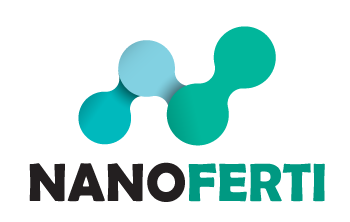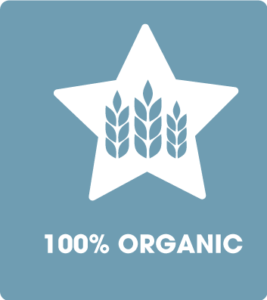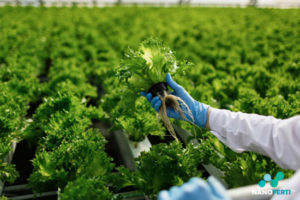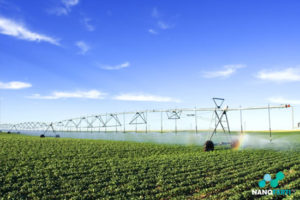A new study published in Ecotoxicology and Environmental Safety has focussed on harnessing the mechanisms to enhance crop productivity as well as improve the availability of phosphorus (P) on the reclaimed abandoned agricultural soils using nanotechnology.
Phosphorous and Agricultural Production
Phosphorous is an essential component for crop productivity as it directly affects plant growth and yield. A decreased P content condition prevails in most agroecosystems, which has been a persistent problem. Farmers use excessive P-containing chemical fertilizers in agricultural soil to improve crop productivity. However, the overuse of synthetic fertilizers is not a healthy agricultural practice.
Scientists have stated that drylands possess a major challenge for P fertility management owing to their unique mineralogical and geochemical conditions, which favor the formation of insoluble P complexes that limit P mobility. In agriculture, nanotechnology has been used to develop smart fertilizers that can enhance crop productivity with reduced negative effects on the environment compared to chemical fertilizers. Additionally, nanofertilizers can also improve the soil by enhancing the soil nutrient availability by enabling targeted delivery, controlled fertilizer release, and higher mobility.
Researchers stated that in arid or semi-arid conditions, P-based nanofertilizers could be more beneficial than synthetic fertilizers because the latter tend to react quickly and develop low solubility P complexes in the soil.
A nano-based controlled release of P-based nanofertilizers could not only ensure the slow release of fertilizer but also improve active sites for greater mobilization. Phosphate solubilizing bacteria (PSB) could considerably enhance the efficiency of the applied P fertilizer. Additionally, it decreases P adsorption and precipitation via hastening the dissolution of inorganic phosphorus, which upholds organic P mineralization.
Rapid climatic changes and anthropogenic activities have resulted in agricultural abandonment, which is associated with the termination of farming activities. It is more difficult to restore farmlands in semi-arid regions, owing to reduced fertility and adverse edaphic conditions. Scientists stated that nano-rock phosphate could help restore degraded soils by promoting higher PSB activity that would enhance P availability.
The Effect of Adding PSB with Rock Phosphate-based Nanofertilizers in Degraded Soil- A New Study
In a new study, researchers studied how rock phosphate-based nano-fertilizers, in combination with a suitable PSB inoculant, could enhance the productivity of abandoned farmland.
Here, the team conducted a pot experiment with surface soil collected from previously abandoned semi-arid agricultural land after a decade of reclamation. They evaluated the agronomic potential of maize on reclaimed agricultural soil by amending encapsulated nano-rock phosphate (ENRP) and non-encapsulated nano-rock phosphate (NRP) as a primary source of P fertilizer.
The authors hypothesized that ENRP combined with a PSB inoculant would exhibit greater biological P cycling activity compared to raw nano-rock phosphate. An increased P content in the soil could substantially enhance plant growth.
The current study revealed that ENRP could act as a suitable P source that can promote plant growth and the yield of degraded lands. The rock phosphate encapsulated in a superabsorbent polymer (e.g., chitosan) can absorb water steadily and promote greater microbial activity. This would cause a slow and steady release of soluble P for plant uptake.
Previous studies have revealed that PSB is present as a part of the rhizobacterial population, which can successfully colonize the host plant and promote its growth. The present study reported that plant growth and grain yield significantly vary with or without PSB in soils.
Researchers reported that P nutrition content was greater in soil with PSB than in non-inoculated soil. The finding of this study is consistent with previous studies that showed that the addition of biobased polymer-coated fertilizers could counterbalance the carbon requirement for microbial energy metabolism.
The authors revealed that PSB (Bacillus cereus) inoculation with nano rock phosphate has enhanced root growth and increased the below-ground biomass. Bacillus cereus produces auxin, the main hormone for seed germination, root cell division, and lateral root growth.
Researchers stated that PSB inoculation enhances P uptake by plants, which promotes plant growth and yield. Additionally, a considerable difference in phosphorus use efficiency (PUE) and residual soil biological P pools was observed in the presence of ENRP fertilizer along with PSB inoculant. Researchers also reported that inorganic P (e.g., CaCl2-P) and bioavailable P (e.g., resin-P) have a linear relationship with coated and non-coated P fertilizers.
Conclusion
This study showed that ENRP offers a slow release of P fertilizer, which increases the growth and yield of maize. In addition, larger gains were observed with PSB inoculant along with ENRP fertilizer. These findings imply that combination treatment is more advantageous in terms of plant growth and yield in abandoned soils.
Reference
Yasmeen, T. et al. (2022) Abandoned agriculture soil can be recultivated by promoting biological phosphorus fertility when amended with nano-rock phosphate and suitable bacterial inoculant. Ecotoxicology and Environmental Safety. 234. 113385.
https://www.sciencedirect.com/science/article/pii/S0147651322002251
https://www.azonano.com/news.aspx?newsID=38828



